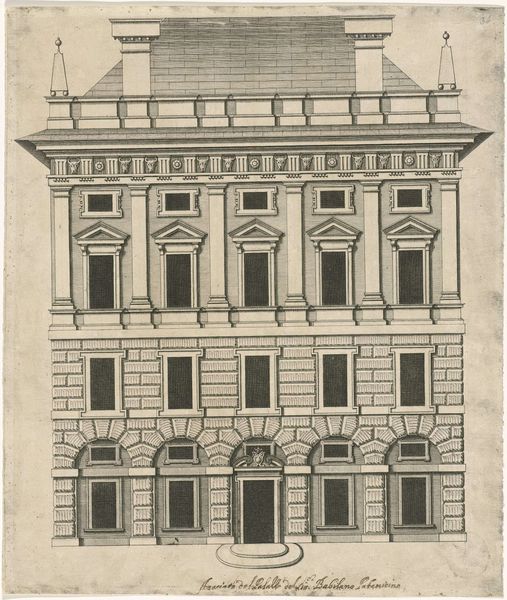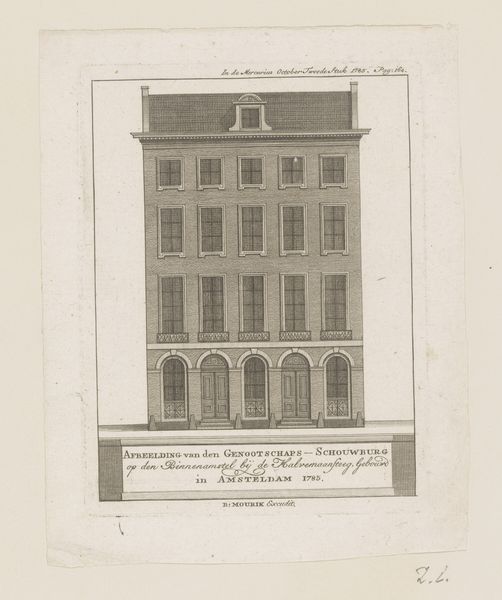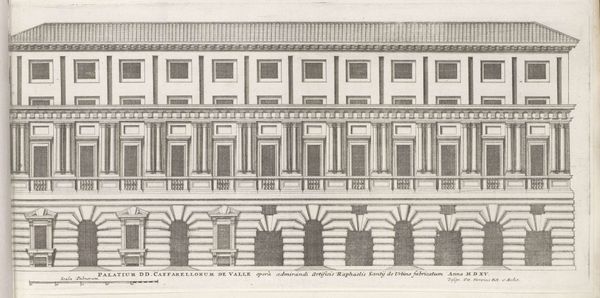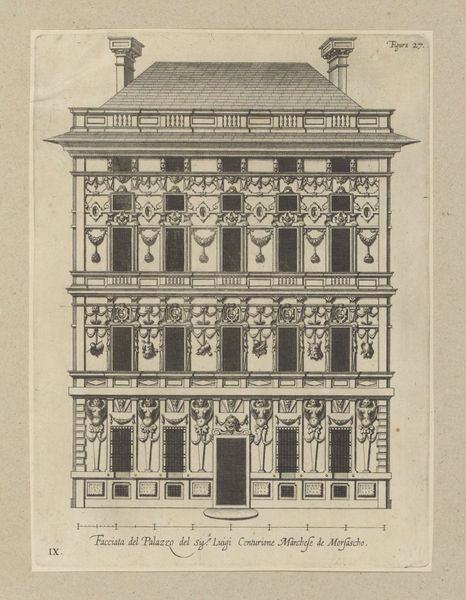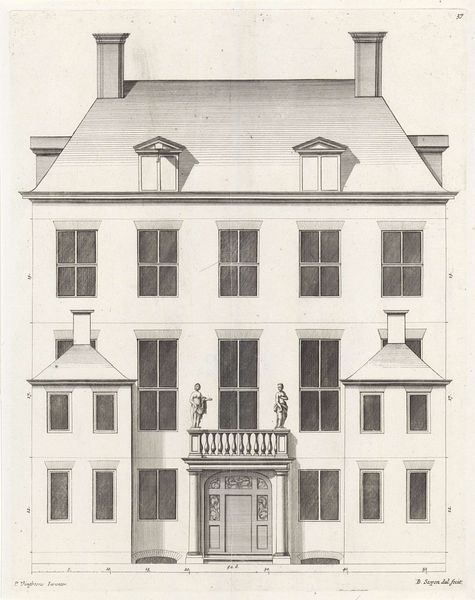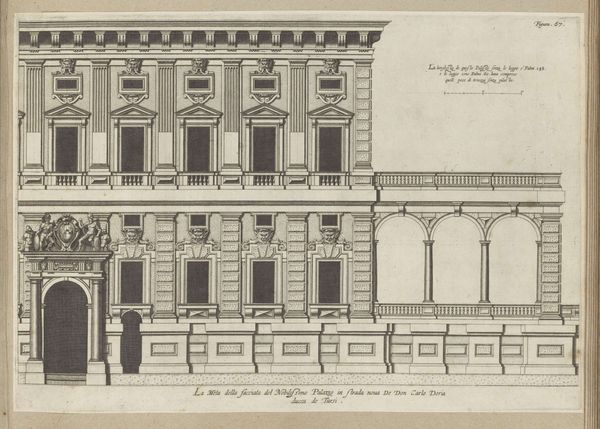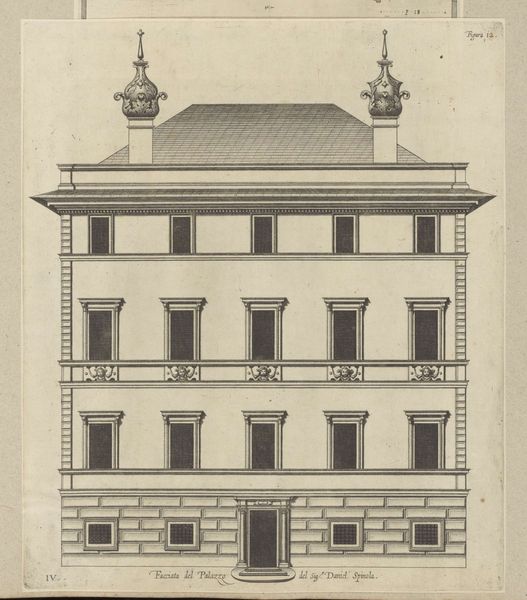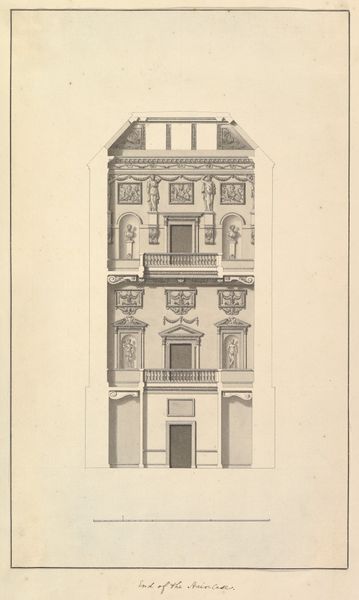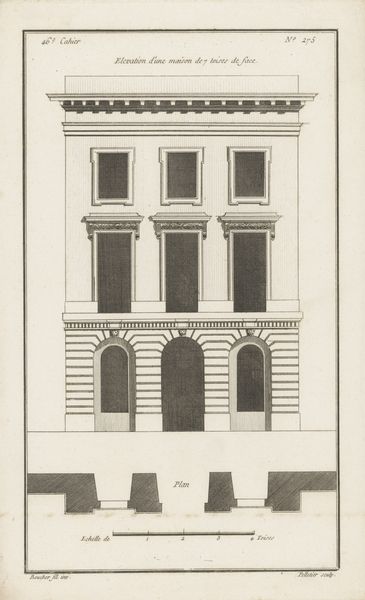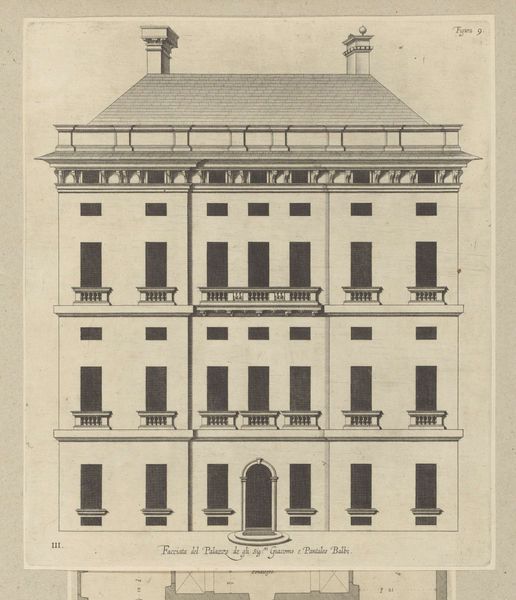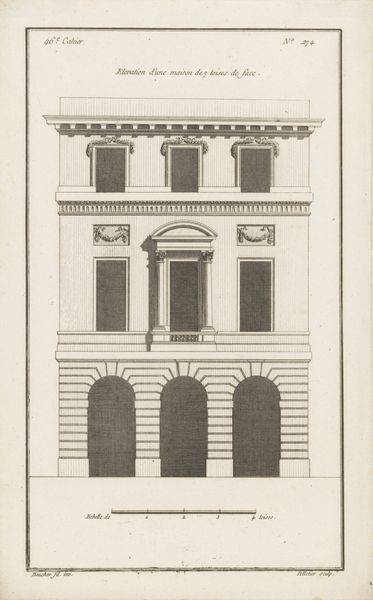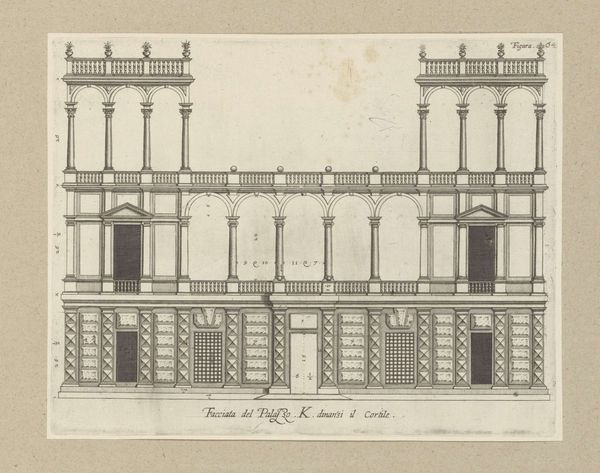
print, engraving, architecture
#
dutch-golden-age
# print
#
old engraving style
#
cityscape
#
engraving
#
architecture
Dimensions: height 297 mm, width 193 mm
Copyright: Rijks Museum: Open Domain
Curator: We're looking at an engraving titled "Huis Koymans Keizersgracht" from 1631. It's currently held in the Rijksmuseum. Editor: Strikingly geometrical. The severe facade above the architectural plan below creates a feeling of order. It’s the kind of image that immediately asks for scrutiny. Curator: Absolutely. The work is significant in understanding Dutch Golden Age urban planning and architectural standards. We see in the rendering here a connection between design and daily life. Editor: Observe the precision of the engraving—the repetition of windows, the careful rendering of the brickwork. How does this reflect the values and aesthetic principles of its time? It embodies visual clarity. Curator: The labor involved in such detailed engraving shouldn't be overlooked. Also, consider who this print was made for. It probably wasn't the working class; its consumption likely aligned with merchants invested in trade and architecture. The print documents wealth and societal stratification. Editor: But does knowing the patron change what we perceive within the lines and form? Focus on composition: the mirroring in both levels conveys a strong emphasis on symmetry and clarity of form. There is undeniable structuralism at play. Curator: That symmetry mirrors a societal desire for order but ignores the workers that built this place and the global trade that funded it. By viewing art through materiality and production we confront those power dynamics. Editor: Fair, and yet one cannot dismiss the formal choices at play—a refined, austere architectural portrait. Its semiotic power lies in the building's structure; each element contributing to an overwhelming sensation of purpose. Curator: Indeed, there's undeniable intention to the image; however, recognizing labor challenges these interpretations, situating this print within real-world, material, and societal conditions provides fuller insights. Editor: Ultimately, our conversation highlights how formal structures intersect with historical context. Curator: Yes. Examining the art object through both formalism and material processes yields more dimensions of consideration.
Comments
No comments
Be the first to comment and join the conversation on the ultimate creative platform.
